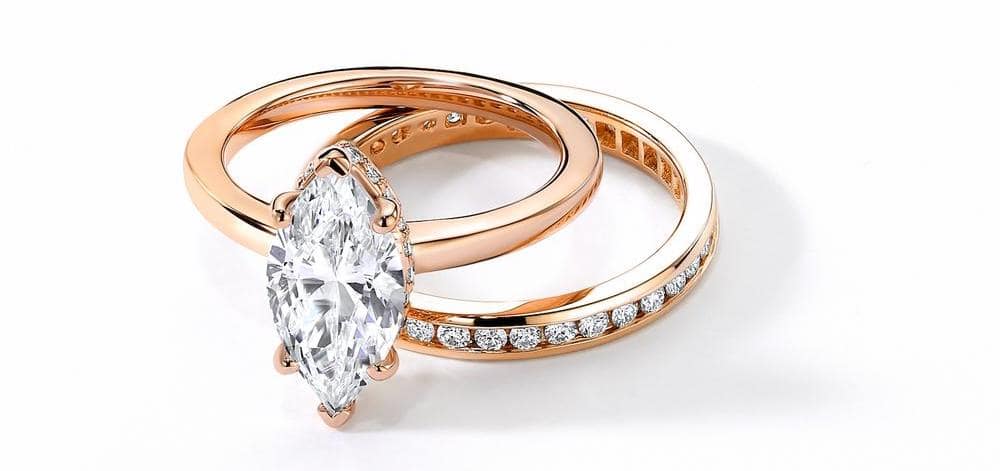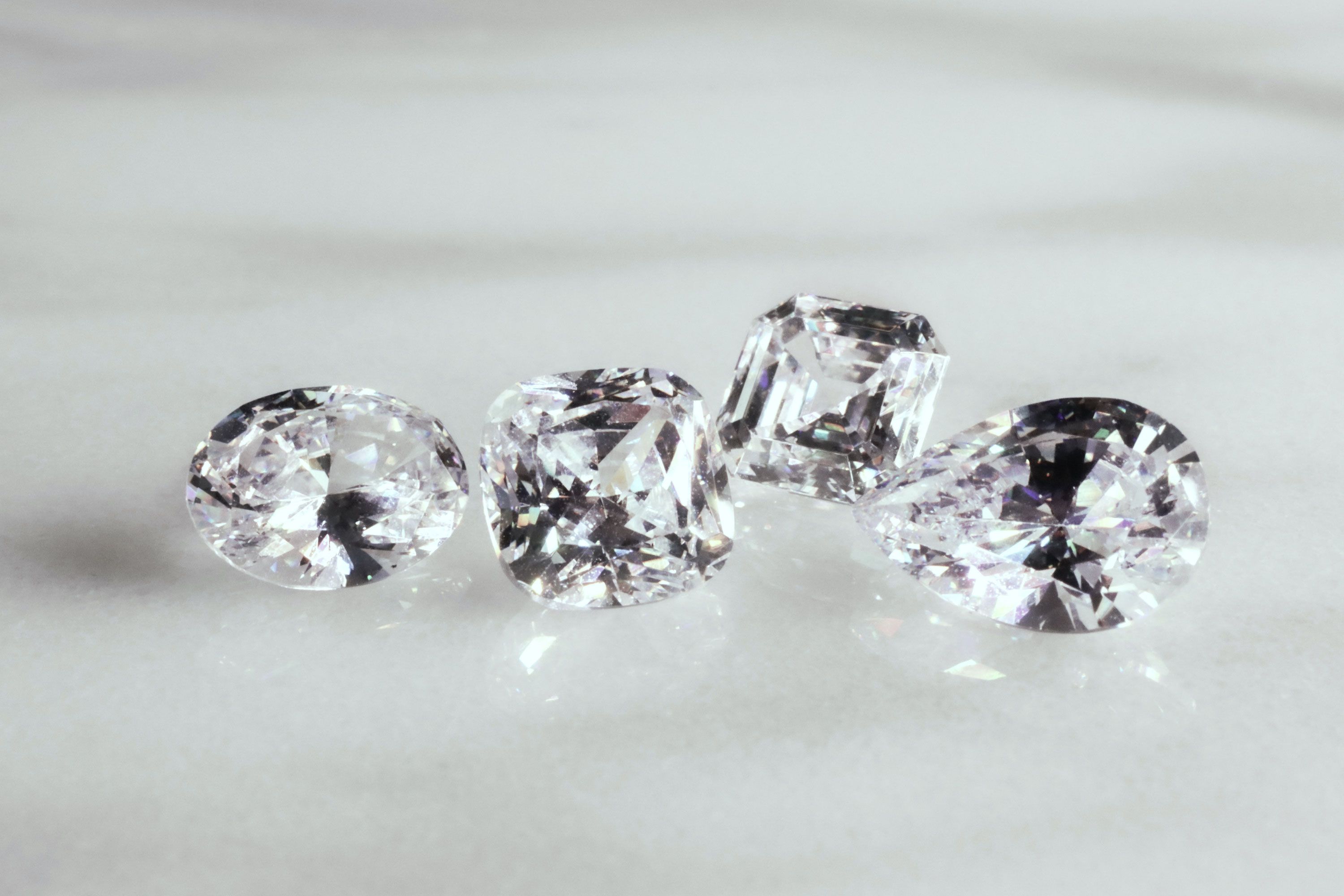How Are Lab-Grown Diamonds Made?
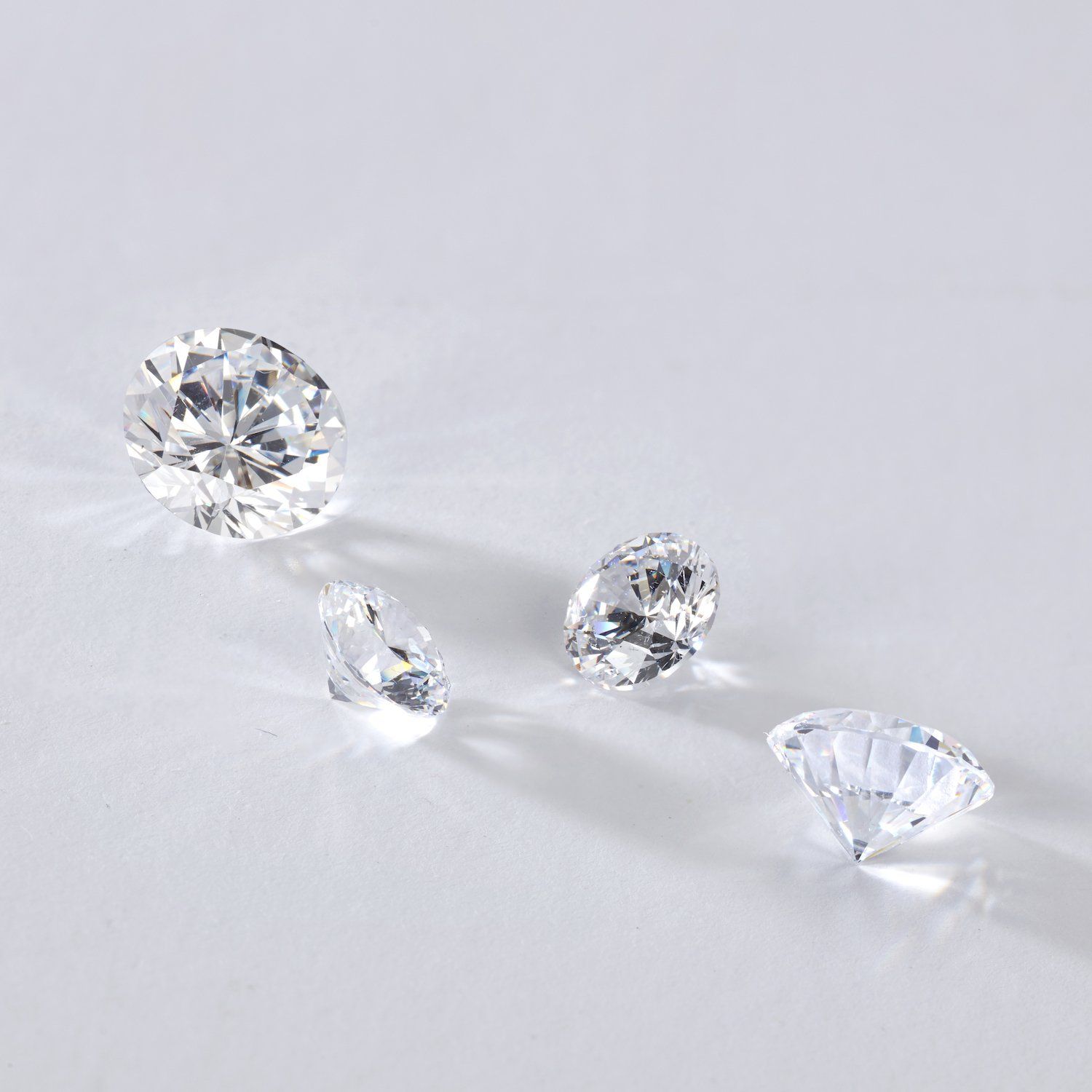
Shoppers are increasingly choosing lab-grown diamonds over mined diamonds for many reasons: they're more sustainable, more affordable, and provide complete assurance that they were ethically sourced. Lab diamonds are real diamonds that are optically, physically, and chemically identical to their mined counterparts, and will test as a diamond when a diamond tester is used.
There are two processes in which lab diamonds can be grown: High Pressure, High Temperature (HPHT), and Chemical Vapor Deposition (CVD). Some lab-grown diamond grading certificates will indicate how the diamond was made.
CVD vs. HPHT Lab Grown Diamonds: How Are They Made?
How are HPHT Diamonds Made?
The HPHT method is the original method of creating lab-grown diamonds. During HPHT, diamonds are made in a lab by replicating the high-pressure, high-temperature conditions that form diamonds underground in the Earth.
Gem quality HPHT diamonds were introduced in the 1950s. Outside of growing diamonds, the HPHT process can also be used to enhance the color of diamonds to make them colorless, pink, green, blue, or yellow.
To grow an HPHT diamond, a small diamond seed (a very tiny diamond) is placed in carbon, the element that diamonds are made of. The diamond seed is exposed to extreme heat and pressure, replicating the way diamonds are naturally grown underground by the earth. The diamond seed is exposed to temperatures of over 2,000 degrees Fahrenheit and pressure of about 1.5 million PSI (pounds per square inch). The carbon melts and forms a diamond around the seed. It is then cooled and the diamond is formed.
A rough HPHT diamond forms differently than a rough CVD diamond.
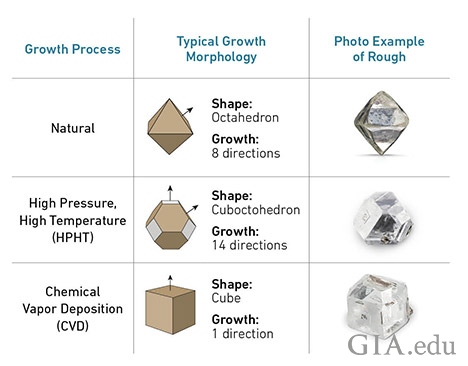
HPHT diamonds are more likely to have a yellowish hue because they are exposed to nitrogen while forming. They also tend to have darker inclusions, which are metallic. These metallic inclusions can help scientists identify them as lab-grown because naturally formed diamonds rarely capture metals during formation.
The metallic inclusions in HPHT diamonds can make the stones magnetic. This is another way to tell if a diamond is lab-grown – natural diamonds are not magnetic. A 2012 study revealed that over half of the HPHT diamonds tested registered a detectable magnetic response.
How to Identify HPHT Diamonds
The most reliable way to identify an HPHT diamond would be to simply look at its grading report. Lab diamond grading reports will specify if the diamond was grown through the HPHT method or the CVD method. Below is an example of a GIA report that identifies a lab diamond as an HPHT diamond.
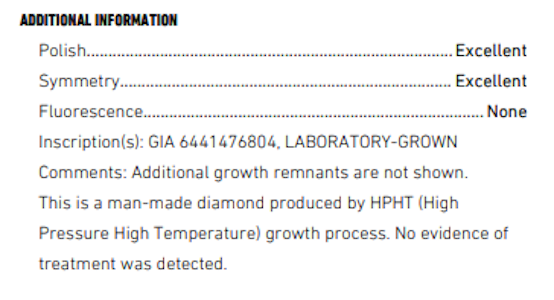
Another way to identify an HPHT diamond would be to see if it has a blue tint. Some (but not all) HPHT diamonds have what is called a blue nuance, a side effect of the HPHT process. The HPHT process can expose diamonds to boron, which is what can give diamonds a blue color. In fact, fancy blue diamonds are the result of extra boron during the growing process!
Learn More About the Blue Nuance
As mentioned earlier, over half of HPHT diamonds have a magnetic response due to their metallic inclusions. You could try using a magnet on the diamond, but this isn't always a reliable indicator in determining if the diamond was grown through the HPHT process as not all HPHT diamonds will have enough metallic inclusions to react to a magnet.
module
How Are CVD Diamonds Made?
The CVD method was created in the 1980s, making it newer than the HPHT method. The CVD method imitates how diamonds form in interstellar gas clouds. The CVD method uses less pressure than the HPHT method as well as smaller machines.
The CVD method places a diamond seed in a vacuum chamber. This chamber becomes filled with carbon-rich gases and is heated to nearly 1500 degrees Fahrenheit. The gas turns into plasma from these extremely high temperatures, causing the release of carbon pieces. These carbon pieces become layered onto the diamond seed, which grows the diamond.
The CVD process produces Type IIA diamonds, which are extremely rare for naturally occurring diamonds. This can help scientists determine if a diamond is lab-grown or earth grown. Type IIA diamonds are the most chemically pure diamonds – they lack nitrogen and/or boron impurities, unlike HPHT diamonds that are exposed to nitrogen. CVD diamonds are not magnetic like HPHT diamonds can be.
How to Identify CVD Diamonds
CVD diamonds have fewer tells. The easiest way to identify if you have a CVD diamond would be to check the diamond's grading report, which will list how the diamond was grown.

Occasionally, CVD diamonds are reported to have what looks like "strain lines" as a result of their growing process. However, you likely wouldn't be able to see these lines with the naked eye - you would need a loupe to see them. CVD diamonds are also known to fluoresce distinct colors like red under UV light - but don't worry, lab-grown diamonds at Ritani are only available with no fluorescence or faint fluorescence.
Which method is better?
You will not be able to tell the difference between a CVD and HPHT diamond with the naked eye. Both methods can create a beautiful, sparkling diamond. Both the CVD method and the HPHT method will create a real diamond that is optically, chemically, and physically identical to earth-grown diamonds.
RELATED: CVD vs HPHT Diamonds: What's the Difference?
Learn more about Lab-Grown Diamonds here:
